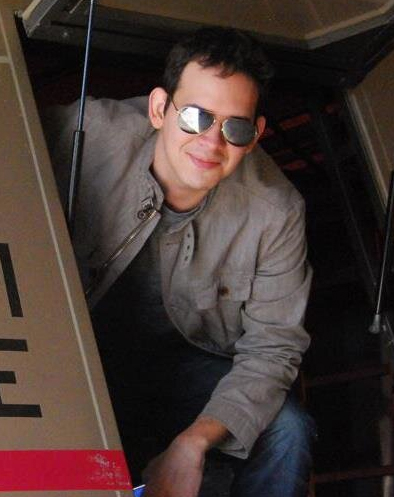
There have certainly been a lot of Star Trek home media releases this year – from reissues of The Next Generation and The Original Series to Nick Meyer’s Wrath of Khan Director’s Cut, Star Trek Beyond, and the just-debuted Animated Series collection – but there’s one Blu-ray set right around the corner that’s had classic Trek fans buzzing all summer.
Star Trek: The Original Series – The Roddenberry Vault first made a splash back at San Diego Comic Con in July, where Mike and Denise Okuda, Rod Roddenberry, and our friend Roger Lay, Jr., surprised fans with this long-in-process recovery effort of thousands of cans of Original Series film reels, hunting for special secrets buried in the archives.
At the annual Las Vegas Official Star Trek Convention in August, the team was joined by other project contributors, offering a lot more detail about what this new Blu-ray set was going to be all about – while also working hard to set fans’ expectations for this release, coming December 1 in Germany, December 5 in the UK, and December 13 in North America.
We had a chance to catch up with producer Roger Lay, Jr., at the Star Trek: Mission New York convention back in early September to talk about this huge undertaking, and seek out answers to questions we’ve seen from many around the web about this fascinating project!
https://www.youtube.com/watch?v=4eBSPieZqYM
TREKCORE: It’s been said that this project has been going on for something like nine years – what’s taken so long?
ROGER LAY, JR.: I think the reason it took so long is that there wasn’t really a structure in place early on. You have to remember that if you go back seven, eight years ago, that’s when they were working on other projects – like the TOS remastering, and then the Next Gen restoration – so those were the priority for CBS at the time.
They knew this old footage was there, though, and was available, but they had to figure out a methodology to deal with it – they just didn’t have the ability to focus on it full time since Mike and Denise Okuda were working on the other restorations, and Phil Bishop and the entire CBS production team was really busy on the other stuff they were doing.
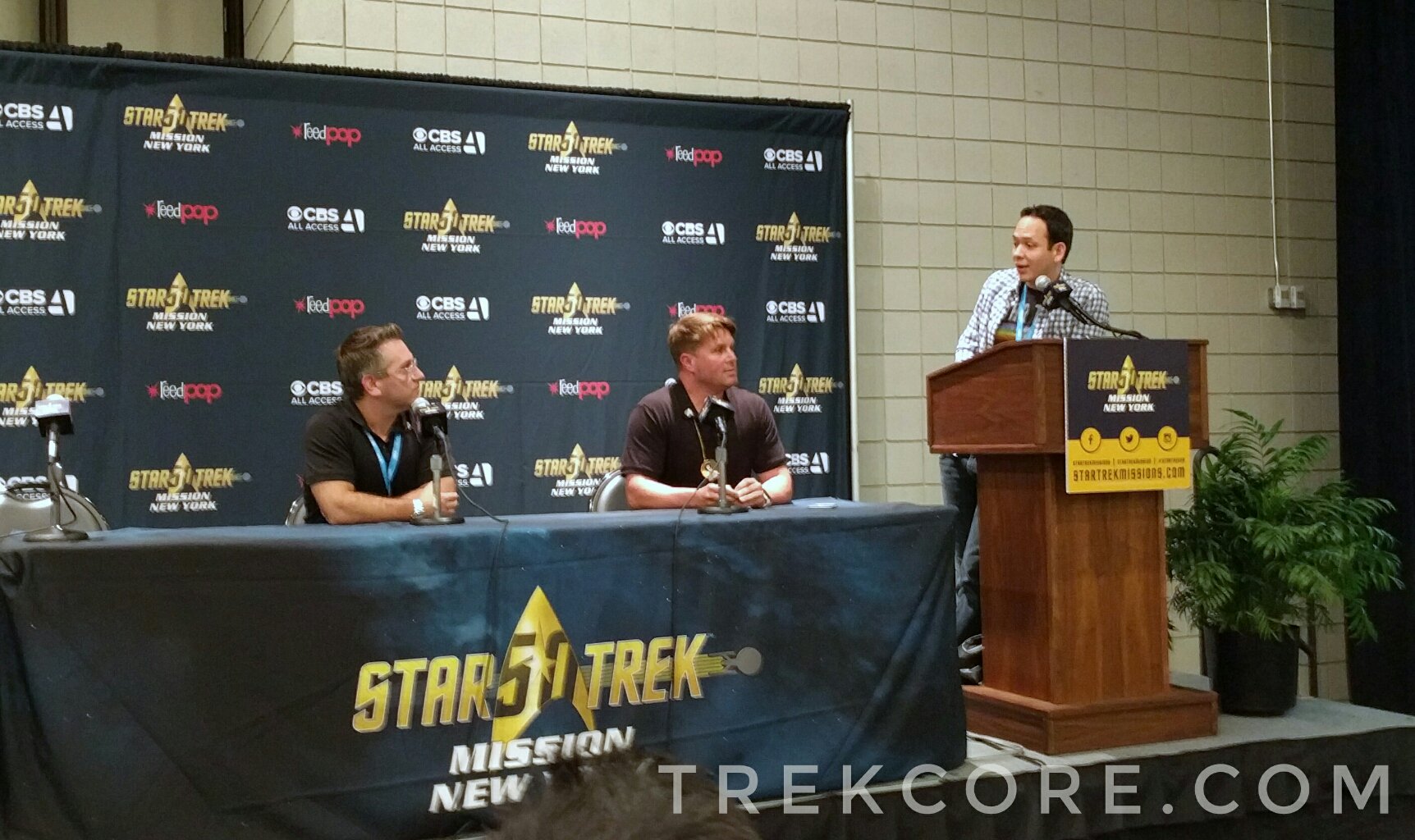
It was a matter of finding the right time. Once they decided they were going to take the leap of faith and start looking through this stuff, they didn’t really do it all in one sitting because other things were happening. The scanned footage was coming in batches – and as Trevor [Roth], Rod [Roddenberry,] and I have said, you open up a can and you might only see one little roll of film. And then in the next one, a bigger roll… but that one big roll might have just been a workprint of an entire episode with nothing special in there at all.
CBS had to find someone who would sit there, take all the stuff out, splice it together, core it [back onto a film reel] — and then telecine the footage. That took time, and that’s why it took so many years. And when they would make media files of these reels, then they had to wait until someone was available to view it. There was no specific structure during the early stages of the process, because there was no plan for a product – because no one had a clue as to what we would find.
TREKCORE: …if you would even find anything at all.
LAY: Yeah. That’s why it took so long.
TREKCORE: Back at Comic Con, Denise said it was like a big classified project – why all the secrecy? Just to avoid getting fans’ hopes up for something that may not pan out?
LAY: Yeah – and the moment you tell the fans that you found something this relevant, the next question is, “Well, what are you going to do with it?” And there was no answer to that yet, because we needed to see everything and figure out not only what we have, but also what the best use of the material might be.
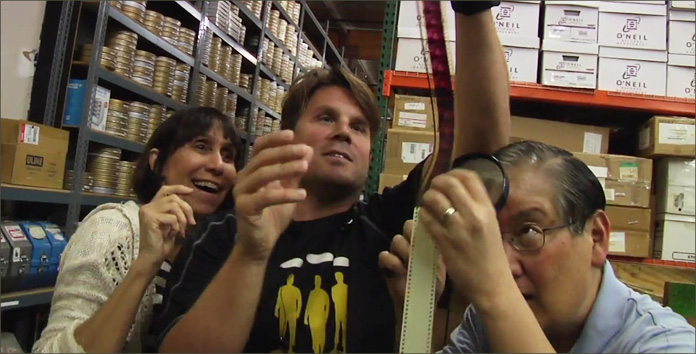
And as I said, there was Next Gen, I was working on the single-disc TNG releases, we were doing those theatrical releases for the first three seasons – plus I was working on the Enterprise Blu-ray project at the same time, as well as other home media projects, all in addition to my regular work as a producer on other films and projects, you know?
So it was a long stretch of saying, “Well, we’ll figure it out.” – that is, until about two years ago, when I finally sat down and wrote out like a sixteen-page proposal of what we should do with this material.
That’s when everything really started kind of taking shape with Mike and Denise and myself, and all these conversations with the executives at CBS, kind of delivering a vision for them In this proposal.
It was pretty hefty – we used frame-grabs from the recovered footage so that we could explain to them how we were going to utilize the imagery, like when a filmmaker comes in to a pitch meeting with eight different concept renderings of key scenes, saying “These are the moments.”
So we pulled those moments that we thought were mind-blowing – like the Peter Kirk scene from “Operation – Annihilate!” – and we’d explain what it was, how we could build that into a narrative that could put everything into context.
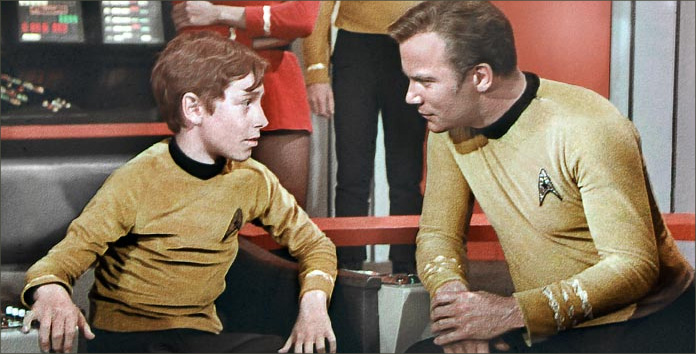
TREKCORE: Speaking of ‘building a narrative’ – and you mentioned this a bit in the panel discussion – why aren’t these new clips going to be a branching feature from the included episodes?
LAY: You have to guide the viewer through the importance of these clips, and you have to highlight what it is they’re going to be appreciating here. At the same time, it’s the fiftieth anniversary, so we wanted to revisit the origins of the show and tell the story of life on the set and the challenges these people faced – and we feel the footage really helped us do that.
It’s a combination of two experiences — taking you on a time-travelling journey, while revealing these snippets of moments that we never even thought had survived.
TREKCORE: And there’s this other feature, with everything else you found…
LAY: Yes, there’s a set of clips that didn’t really fit into our narrative of the origins of the show, the making of those three seasons. Any other components we found that we thought were interesting, and compelling, and hadn’t been seen before – because that’s the key element here, it’s stuff that hasn’t been seen – we’re parking all that stuff in a piece called “Snippets from the Cutting Room Floor.”
TREKCORE: So it’s kind of a catch-all of all the ‘other stuff’ recovered from the film.
LAY: That’s the commitment CBS, the Roddenberry team, and everyone involved has to this project – so that the fans buying the Blu-ray set will feel that they got everything there is to see. Because that’s something that comes up a lot at these convention panels: are we using everything? The answer is “Yes.”
That includes behind the scenes footage, too – we spend a great deal of time exploring the creation of the Original Series’ special effects in “Visualizing the Fantastic,” where you get to see how the technicians kind of figured out everything on the fly, sometimes they had just a couple of days to get a certain effects shot.
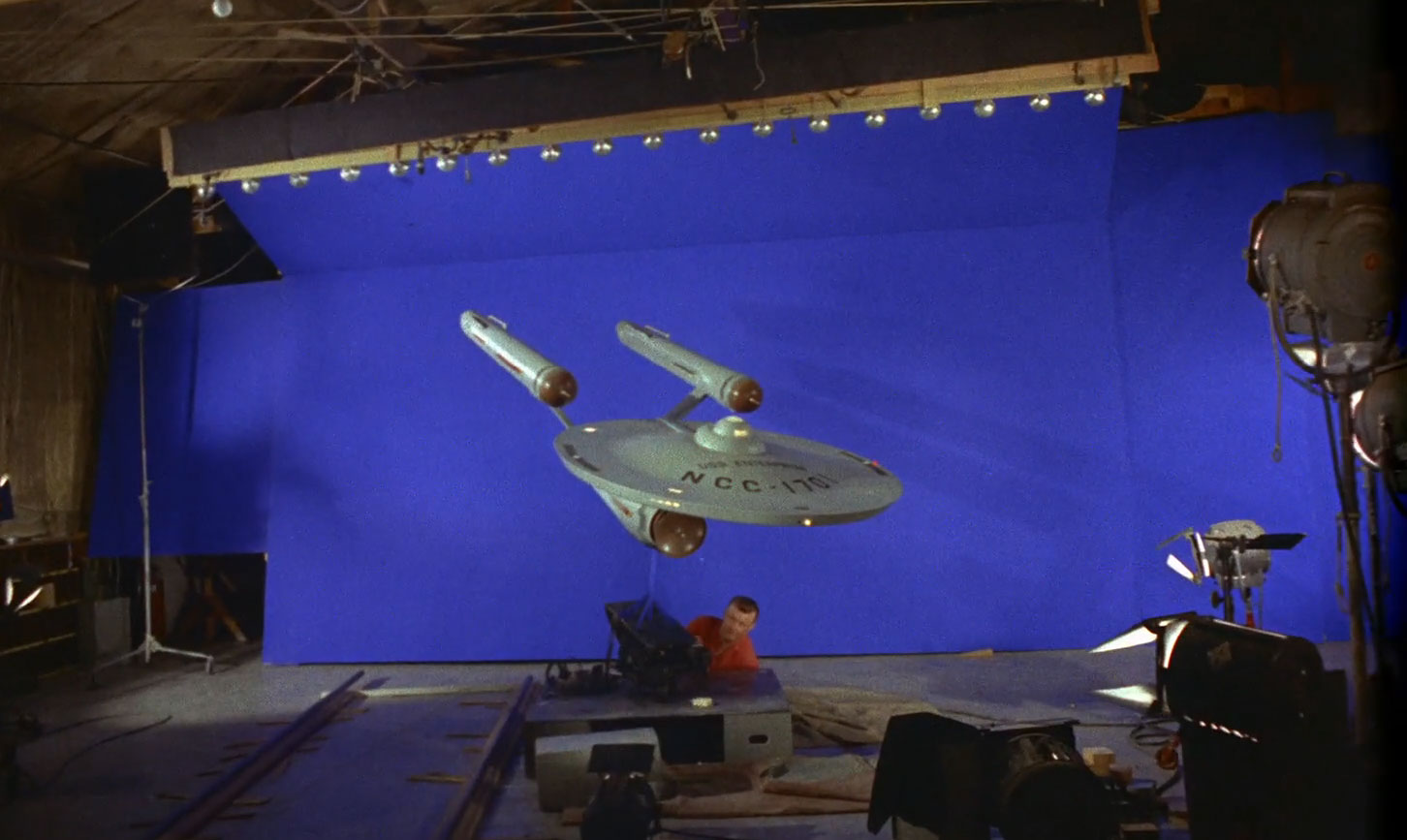
TREKCORE: So that’s like creating the planets, the transporter effects – and you mentioned there’s also model footage, like additional Botany Bay shots we haven’t seen.
LAY: The Botany Bay, and just great stuff of the Enterprise – long takes coming in slowly, from the original material shot at the effects house. You see the technicians around the miniatures on the stage floor working – for example, in order to rotate the ship, because there was no motion control – they had the stand for the ship on a camera head, so you had to rotate that camera head.
So there’s a technician on the floor rotating that, and he’s sweating his –
TREKCORE: When it’s a million degrees!
LAY: Yes! You see all the lights, the whole setup – you get to understand how they did it because you see the entire rig. The shuttle, the Botany Bay, the Enterprise, the K-7 space station — a lot of great stuff.
TREKCORE: Is there anything in there that survived from the filming of “The Cage”?
LAY: There were some workprint elements from that episode – we actually used some snippets of that footage in one of the documentaries, but nothing really significant.
We talk about “The Cage” in “Revisiting a Classic” as we explore the making of the two pilots before we move on to production of the actually weekly episodic run, so there’s a little tiny bit with Pike on there, but just to cover that portion of creating the show.
TREKCORE: You were also talking about some of the other features – you mentioned that each disc has a part of the overall documentary…
LAY: “Inside the Roddenberry Vault.”
TREKCORE: And that’s like an hour per disc?
LAY: Yeah, an hour a disc. Each disc will have a standalone piece, along with one part of “Inside the Vault.”
The first disc has “Revisiting a Classic,” which takes you back to the beginnings, along with part one of “Inside the Vault.” The second will have “Visualizing the Fantastic,” along with the second part of “Inside the Vault.” Disc three has the “Cutting Room Floor” segment, and the third “Inside the Vault” feature.
So everything is split up nicely – plus there are new commentary tracks, and isolated music tracks for almost every episode.
TREKCORE: You also mentioned that there will be a focus on Gene Coon and his contributions to the show in one part of the documentaries – somebody who’s been overlooked in a lot of the previous interview features.
LAY: Absolutely. Look, there’s a reason we selected the episodes we did – not just because of their connective tissue to the Vault footage, but also because we feel a lot of these are the best examples of what makes Star Trek great.
There’s “Devil in the Dark,” from Gene Coon – but as you go “Inside the Vault,” and we guide you through the new footage, we’re also exploring the elements that helped created this great hour of television. So as you experience the vault clips from “Devil in the Dark,” you’re also learning about Gene Coon.
When you learn about the creation of the visual effects, you’ll also be learning about individuals like Wah Chang, Joseph Westheimer, and Matt Jefferies. You’re going to learn about all these people who contributed so much to Star Trek – not just the cast and widely-known crew.
TREKCORE: All the nitty-gritty stuff.
LAY: Yes, absolutely! We don’t just talk about them, we have great visuals to help tell their story.
I really want people to understand that this project was not just about giving fans an assembly of clips and random footage from the show. This was always about taking people on a journey – and if we’re going on that journey, exploring the origins of the show, then you have to understand who these people were.
Everybody knows about Gene Roddenberry. Everybody knows about Dorothy Fontana, David Gerrold, and maybe John Black. Everybody knows about Harlan Ellison – even though Harlan only came up with the story for one episode – but he’s a superstar in science fiction.
But not a lot of people know about the other individuals whose work we explore here. Albert Whitlock and his matte paintings belong in a museum! We talk about his work, and you’re going to see beautiful visuals from the Vault on his paintings. We talk about the use of optical printing on the show, and cover the father of optical printing Howard Anderson, along with all the VFX people who aren’t with us anymore.
So, again, that’s very different from a product where you just press PLAY ALL and a bunch of short clips play. That’s not what you’re getting here. It was never our intention to do that – our intention was to take you on a guided exploration of the origins of Star Trek, having found the best visuals to help convey that story.
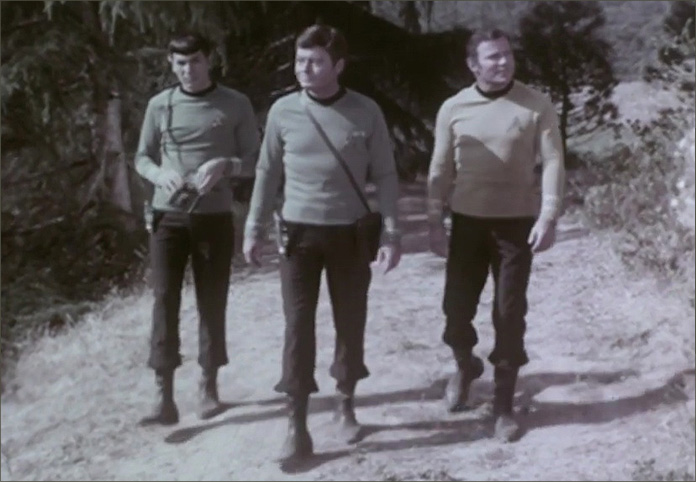
TREKCORE: On some of the recovered scenes, there have been a few hints to what will be included. Scott Mantz mentioned in Vegas that there’s the cut ending to “Who Mourns for Adonais”…
LAY: The omitted dialogue, yeah, where they find out Carolyn Palamas is pregnant.
TREKCORE: You revealed your panel that in addition to the Peter Kirk footage, there’s also a new “Space Seed” scene?
LAY: Yeah!
TREKCORE: Some of these story elements have been hinted at in the Blish novelizations, or other sources…
LAY: Like the scripts from Lincoln Enterprises!
TREKCORE: Right. Those things were at least somewhat public. Was there anything you found, though, that you had no idea existed before the film review process began?
LAY: There were things we were specifically hunting for, because of the myths relating to their existence – like the Peter Kirk material – and I’m happy to report we found those, but there were also smaller things of lesser significance that we found. Not big, but still quite interesting!
There’s a great moment – and I won’t reveal the episode it’s from – of Kirk, Spock, and McCoy together that didn’t make it into the final episode. While it’s a very brief clip, there’s so much character in that moment about how those characters feel regarding their long journey in space on this five-year mission; some great character stuff, where you get inside Kirk’s head about how he feels about what they’re experiencing.
That’s an example of a little snippet we weren’t looking for, we just found it – and it’s great, and it’s part of “Revisiting a Classic” when we speak about the dynamic between these three characters and the three actors. And fans had never seen it before.
So yes, there is more to see on the discs – but no more hints, we need to keep some surprises for everyone. This comes out around the holidays so we don’t want to ruin anyone’s Christmas gift!
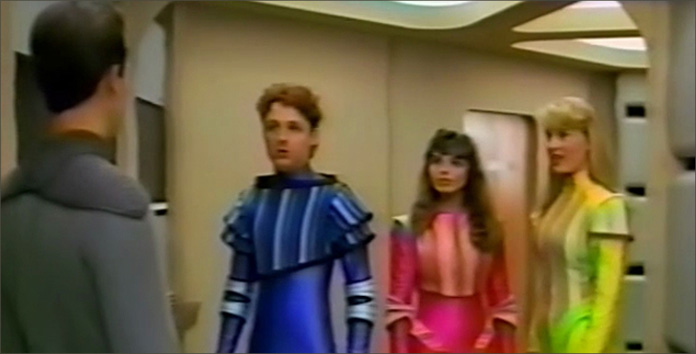
TREKCORE: Finally, we know from Starlog and other publications of the time that there’s more Next Generation footage out there – like Wesley Crusher’s birthday party, or the excised footage from “Evolution” or “Sins of the Father” – that haven’t been officially released.
Is there any chance we might someday see some kind of “TNG Vault”?
LAY: To be honest, I have no idea – I don’t know if there’s enough of that kind of material to do a Next Gen version of this project. I mean, if Rod wakes up one morning and finds a secret storage locker where his dad kept a bunch of TNG film reels, that’d be great for all of us who love the show – but in terms of the missing TNG content that people are aware of, I don’t think there’s enough for another project of this kind of project.
But never say never – this is the fiftieth anniversary of Star Trek, and it’s getting even bigger with Discovery and CBS All Access, which I think is the new frontier for Star Trek. Really, I believe that – I think a new show on a CBS-owned outlet is the best possible set-up, and if it works, think of the possibilities.
When it comes to Star Trek, I never say, “That’ll never happen!” Because so many people around the world are interested in this universe. If there was anything worthwhile, I will say that the people behind the Star Trek brand at CBS would want to get it out there, they know how important it is to fans.
And you’ve seen the wonderful work they’ve done the last couple years on these home video releases, so who knows – but for now, our focus is on getting The Roddenberry Vault set completed, so we can catch our breath for whatever comes next.
* * *
Star Trek: The Original Series – The Roddenberry Vault hits stores on December 13 in the USA, and a bit earlier in the UK (December 5) and Germany (December 1).
Preorder the set below, or you can order the Steelbook edition out of Germany as a special edition!
![]()

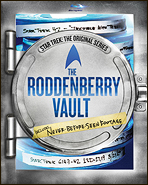 Order The Roddenberry Vault
Order The Roddenberry Vault
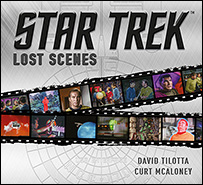 Order Star Trek Lost Scenes
Order Star Trek Lost Scenes